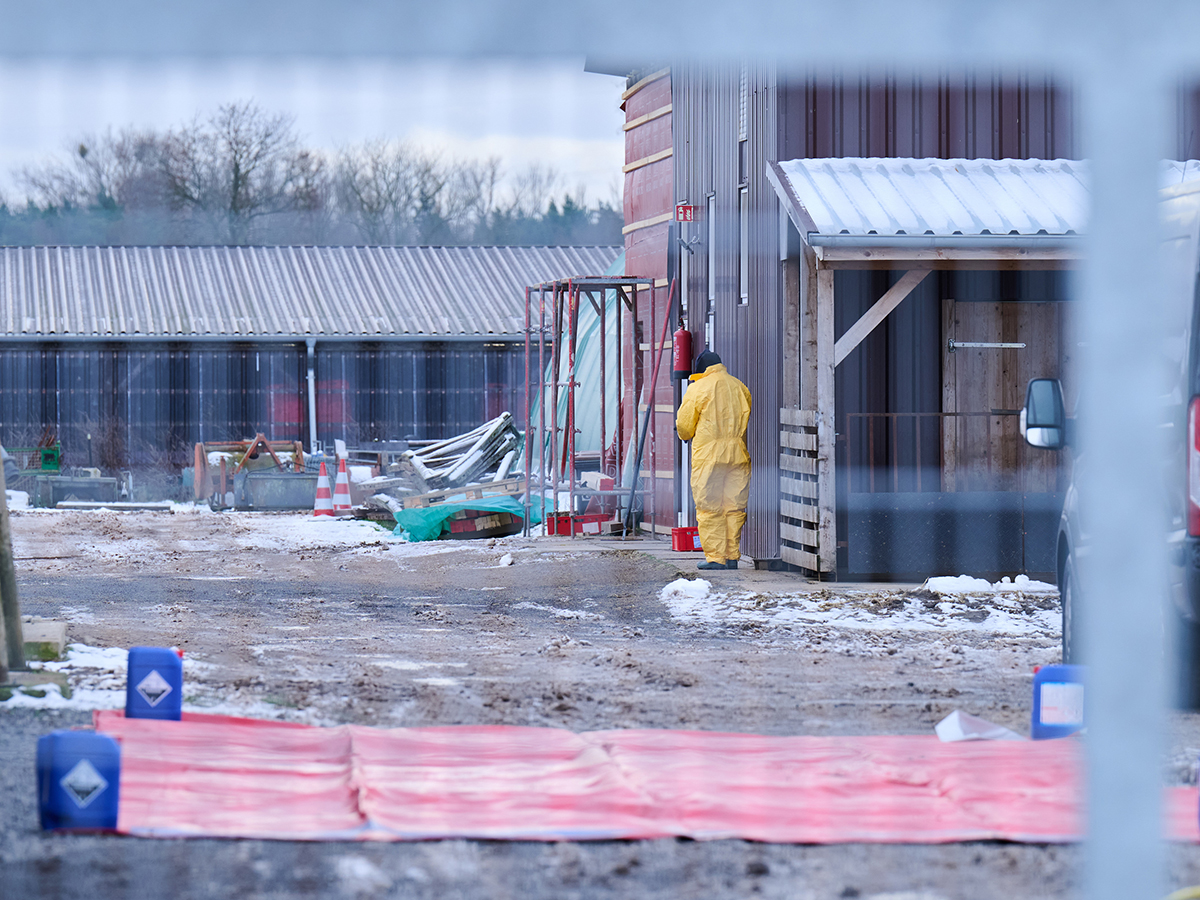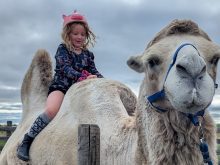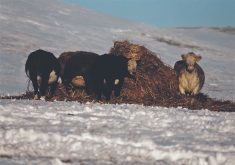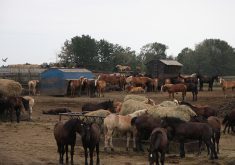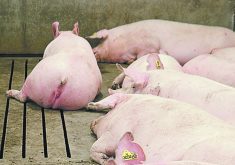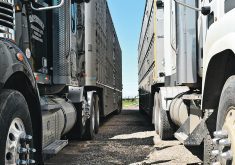Glacier FarmMedia – It was February 25, 1952, and the world suddenly changed for Canadian cattle producers.
Six thousand square miles of southern Saskatchewan, encompassing Regina and Weyburn, was suddenly under strict quarantine due to an outbreak of foot and mouth disease (FMD).
Forty-two farms were affected — 29 were infected and a further 13 were considered contacts.
Read Also

Crop quality looks good this year across Prairies
Crop quality looks real good this year, with the exception of durum.
The RCMP posted notices and enforced the quarantine. Eradication efforts began immediately, and euthanized animals were buried in deep pits carved by excavators in the frozen ground.
Despite this quick and decisive action, the outbreak cost Canada an estimated $89 million for compensation and trade impacts. That’s over $1 billion today.
That was for a relatively minor outbreak, contained quickly.

A 2001 outbreak in the United Kingdom was much more widespread. A total of 2,000 cases of the disease were identified across most of the British countryside. Over 6 million cows and sheep were slaughtered. By the time that the disease was halted that autumn, the crisis was estimated to have cost the United Kingdom £8 billion — or $14.3 billion, the equivalent of $23.6 billion today.
Foot and mouth disease could devastate Canada’s livestock industry, causing suffering and massive economic losses. Preventative biosecurity is crucial to protect herds and prevent widespread outbreaks.
If Canada, with its significantly larger livestock sector, saw a major outbreak like that today, it could be even more costly — to the tune of $65 billion, according to Karen Schmid.
“There’s a huge difference between a small, isolated outbreak and a large, widespread outbreak,” she said.
In countries where FMD is endemic, she noted, the economic impact is estimated to be between $6.5 to $21 billion per year.
Schmid is the beef production and extension lead with Alberta Beef Producers, and speaker during a Jan. 16 webinar hosted by the Beef Cattle Research Council. The event also featured Dr. Leigh Rosengren of the Canadian Cattle Association, and Dr. Afolakemi Adeniji with Animal Health Canada.
The trio spoke about the threat of FMD to Canadian livestock, how to prevent infection and spread of the disease and what kind of impact it would have on the industry.
Rosengren can’t fathom an infectious disease that would have higher consequences than FMD in Canada because of its regulatory response and international trade responses.
If FMD were to be reported somewhere on the North American continent, all countries would be in a high attention warning state, she said. Biosecurity practices would be implemented across North America.

Canada is currently free of FMD, but it remains a significant risk to the cattle industry, Adeniji said, noting that “by implementing robust biosecurity measures, we protect not only individual herds but also contribute to the broader resilience of the Canadian livestock sector.
“I’ve witnessed the devastating impact of FMD outbreaks on animal health and welfare. I believe prevention is not only more effective, but also far more cost-efficient than treatment.”
If we had a brush with it, the official estimate to regain FMD-free status in Canada is between six and 18 months. That’s optimistic in the case of a large outbreak, as far as Schmid is concerned.
Locking down a FMD return
Should a new outbreak of FMD happen in Canada, the preferred method to deal with it would be a “stamping out,” Schmid said.
“We have stamping out plus emergency vaccination [and] to kill with disposing or slaughter, and we have stamping out with emergency vaccination to live,” she said.
Three months is the minimum amount of time it would take to conduct surveillance after the last animals are disposed of in the infected premises. For vaccination to live, where vaccinations are used to avoid having to cull animals, there will be extra testing and surveillance required to demonstrate a lack of infection and transmission of FMD.
Restrictions would also put in place that require affected animals to be under lifelong movement controls.
“They have to be identified for their entire life. So that is really a larger policy piece with producer-level ramifications. If that’s the way Canada chose to manage a very large outbreak, it would require a lot of resourcing,” Schmid said. “Just because freedom is declared at the World Organization for Animal Health, [it] does not mean that countries automatically start lining up to trade.”

Province by province
If FMD does show up in Canada, the goal would be to return to freedom without vaccination as soon as possible. This would mean that an emergency response might not be applied uniformly across all premises and conditions, Schmid said.
One possibility is that there may be the need for voluntary measures, which would help speed up the response time.
“There is a lot of talk right now about how an industry-led stop movement request would work,” Schmid said.
The Alberta government, for example, has the authority to stop movement on suspicion of FMD while waiting for confirmation of the disease. However, that would require producer buy-in.
“The CFIA cannot legally stop movement until a primary control zone is in place, which is expected to take at least 72 hours. So, there’s a period of time there where we’re waiting for confirmation of the disease… when we really get to see where animals are from, and that’s an important thing for producers to realize.”
In the case of an outbreak, there would be movement controls of three kilometres around infected premises.
“We’re going to be doing a lot of tracing, and that’s animals, people, and things, all movement of those for, ideally, 28 days, which is two incubation periods,” Schmid said.
Quarantine and vaccination
Following that would come eradication and surveillance, including vaccination. If depopulation is the chosen method on an infected premises, it will also include cleaning, disinfecting and restocking.
There are multiple types of surveillance, including outbreak surveillance to determine spread, containment zone surveillance of around 28 days, re-stocked infected premises surveillance and status recovery surveillance.
“These supports need to be activated as soon as possible in an outbreak situation,” Schmid said.
There’s also the matter of cost. Farmers would currently not be compensated for extraneous costs of the quarantine and other measures like cleaning and disinfection, outside of ad hoc business risk management programming.
“We really need to think about how… business risk management programs can support these additional costs associated with an outbreak of a foreign animal disease like FMD,” Schmid said.

When vaccination is used in an outbreak, it provides “decent” immune response in about four days, Schmid said. It also reduces shedding and clinical signs of FMD.
At the same time though, she warned, “it may actually only mask symptoms, if animals are previously infected, but not yet showing clinical signs.”
Vaccines currently available in Canada are of a type that allow surveillance efforts to tell the difference between naturally infected animals and those that have been vaccinated, Schmid said.
In surveillance, any vaccinated animal that moved would undergo further testing. If those test results are negative, those vaccinated animals that were not naturally infected could be slaughtered and their meat could be used in the domestic food chain.
Vaccination, however, is just one tool in the fight against FMD, Schmid said.
“Ideally, we want to depopulate infected premises within 24 to 48 hours. This may not be realistic on large operations. The decision must be made early, and it’s a difficult one.”
Effective biosecurity needed
As a federally reportable disease, the Canadian Food Inspection Agency would lay out biosecurity protocols and control zones with any FMD case.
Rosengren believes biosecurity protocols should be built on a strong foundation that has many different layers.
Biosecurity plans often cover things like traffic, structure/farm entry and exit protocols. They also need to include operational realities, put together with best practices the producer already reaches for, Rosengren noted.
“The last, and the most important layer of biosecurity, is culture,” Rosengren said. “[It’s] what we think about in terms of occupational health and safety and biosecurity.”
The veterinarian defined that kind of biosecurity as a way of conducting business that includes planning, training staff, managing people and interacting with cattle.
There are four pillars of this kind of biosecurity:
- • animal health,
- • animal movement,
- • management of ’fomites’ that can carry the disease (such as people, vehicles, equipment and tools) and
- • education and planning.
View of on-farm management
When it comes to animal health, producers should evaluate what facilities they have that they can use to treat an infected cow, such as hospital pens, and what they would do with dead stock in the case of an FMD outbreak. Setting up cameras to remotely monitor hospital pens is a good option, Rosengren said.
“You’ve got a very good eye on them, and people don’t have to walk through the pens and potentially contaminate their boots and put the rest of your stock at risk.”
Producers should also review their animal health protocols with their veterinarian and anyone else handling their animals or coming onto the farm.
Biosecurity is customizable and can look different on a farm-to-farm basis, Rosengren said.
“It’s very specific to your operation. It’s very specific to the facilities and the type of production system you’re running, and even, some ways, on the time of year.”
When it comes to the second pillar – animal movement – producers are encouraged to consider the regular internal movements within their operation.
“Biosecurity is about keeping things out, but you can think of it as keeping them out at different levels,” Rosengren said.
This can mean keeping infection completely away from the farm or confined to an animal in a hospital pen.
The movement of wildlife, horses, dogs and cats should also be considered.
Rosengren believes new traceability rules from the federal government will be coming out this year to aid producers bringing in new stock to their premises.
“The animal identification requirements will remain, but they will be adding in a premises identification,” she said.
There will also be a shorter reporting timeline. Currently, producers have 30 days to report for most things, and that will be reduced to seven, Rosengren added.
“The reason for that shorter reporting timeline is, specifically for FMD disease, 30 days is simply too long.”
This enhanced traceability system has been designed to ensure rapid response to a FMD outbreak.
The third pillar of fomites can be a tricky one, Rosengren said.
“It’s an interesting reminder in human behaviour and also in the need…to talk about biosecurity more as a sector.”
For education and planning, the final pillar, producers are encouraged to take in online seminars such as the one held by the BCRC on Jan. 16. They can also visit the BCRC’s website, which offers simple templates and a producer reference manual.
Could an outbreak in Canada realistically happen?
Schmid believes Canada is unlikely to see a FMD infection via an airborne event. There are no nearby locations with infected animals, so animal to animal infection also carries a low risk, she said.
“Importation from countries with FMD is not permitted and even if there was an outbreak like we see in Germany right now, quarantines are required on both ends of that process and the quarantines are long enough that you would start to see clinical signs during that quarantine process.”

FMD can survive in different feed products for a significant amount of time. However, because countries that are currently experiencing issues with FMD also have issues with African swine fever, Canada is not importing from any of those places.
The most important thing that producers can do, Schmid said, is to assess their risk level regarding international visitors and international workers, and to put a plan in place to ensure that they don’t accidentally introduce a disease into their operation.
They should also assess how long they could stay in operation if they’re put under quarantine, and what essential things they can do if they need permits.




